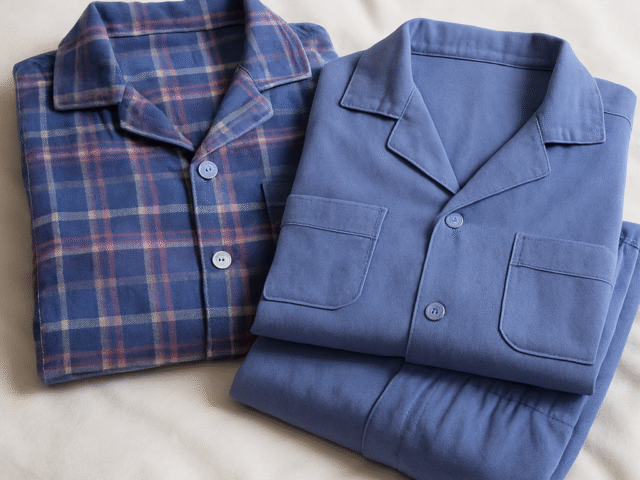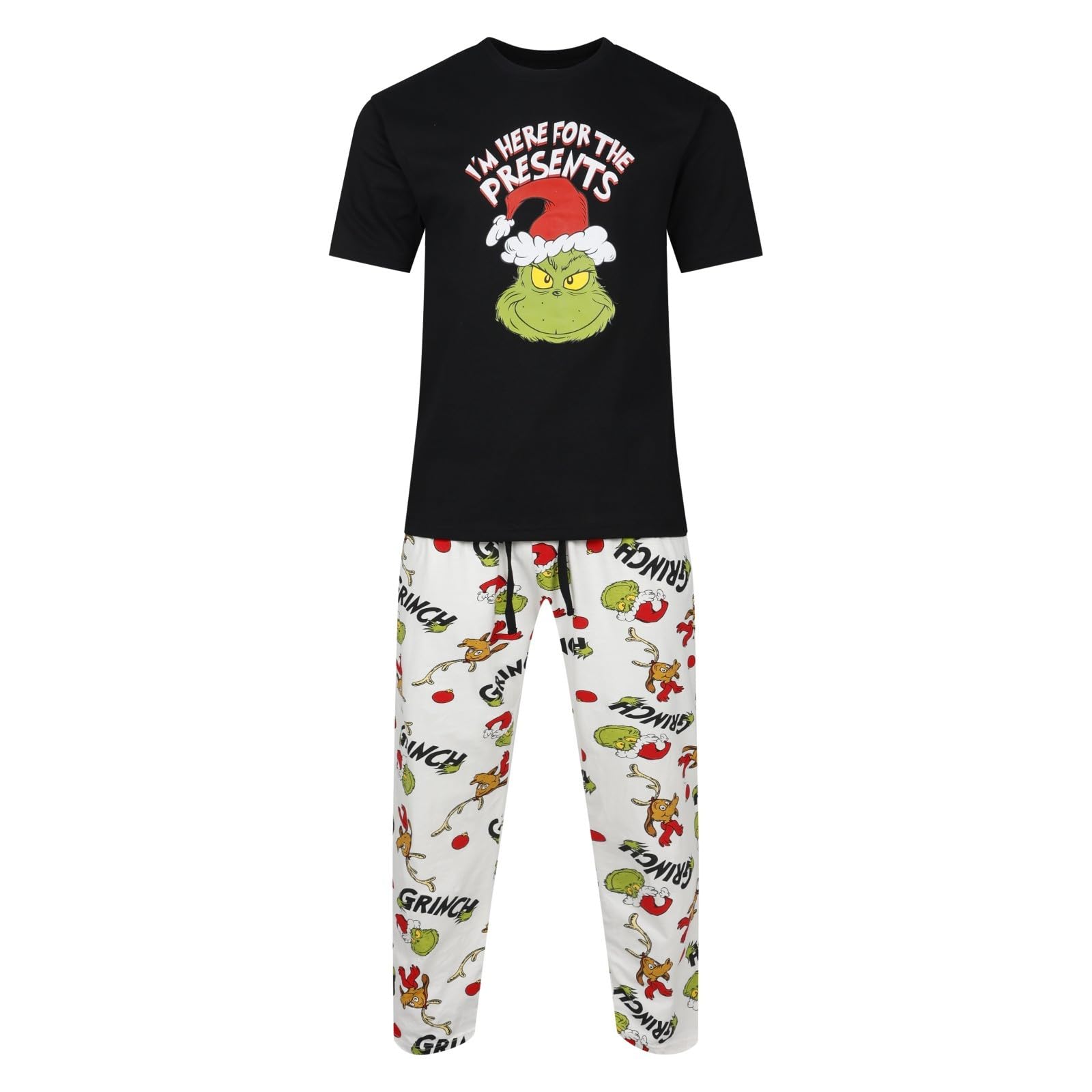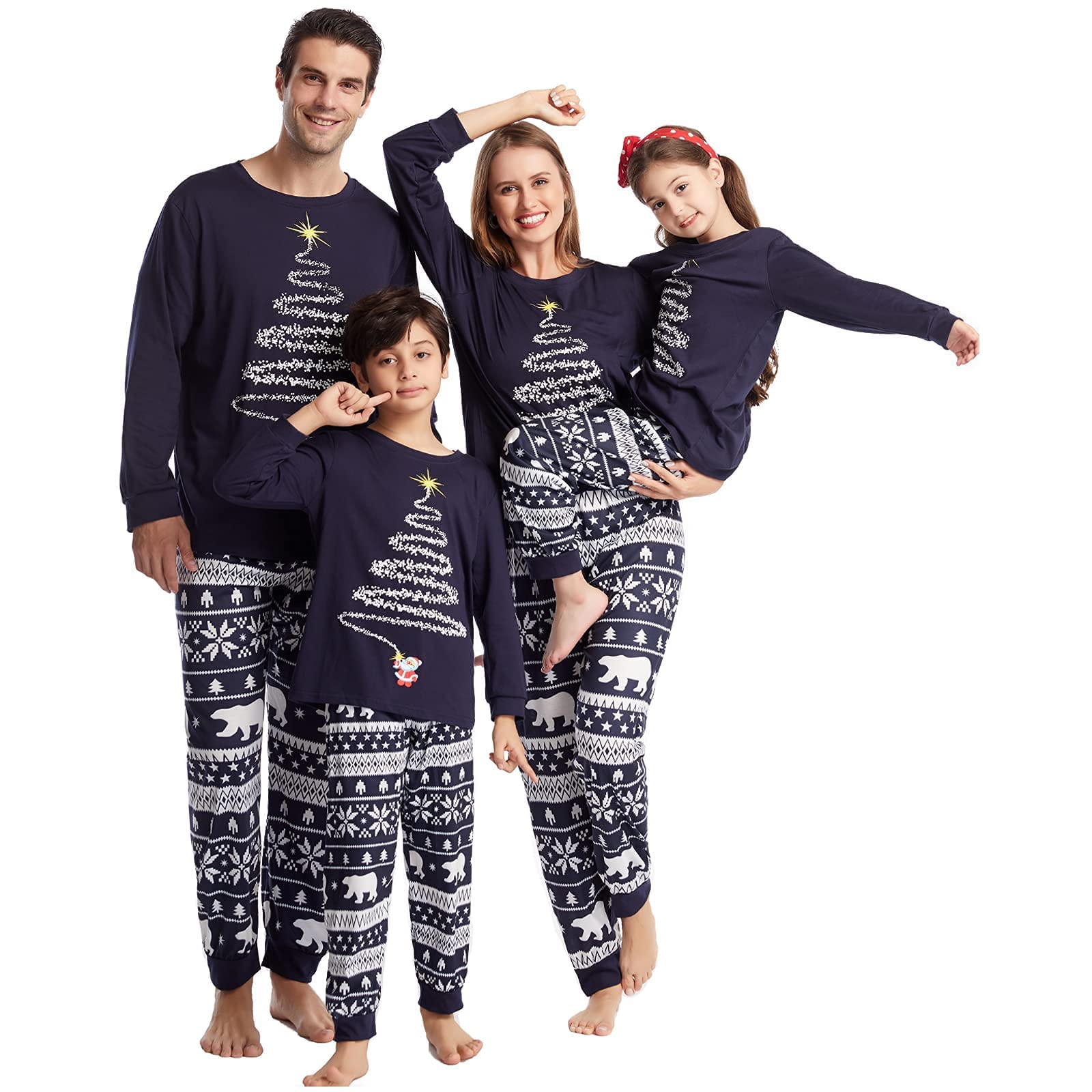Flannel and brushed cotton are winter nightwear staples in the UK, but the terms are often used interchangeably. They are related, yet they feel and behave differently. This guide explains the weave and finish behind each fabric, compares warmth and breathability, and helps you choose a set that stays cosy without overheating when the heating clicks on and off overnight.
Temperature swings feel easier in sleepwear for UK seasons.
Weave and Finish
Flannel is a fabric with a soft, napped surface created by brushing or a raised weave. It can be made from cotton or wool, and the nap traps air for insulation. Brushed cotton starts as a plain or twill woven cotton that is then brushed to raise the fibres on one or both sides. The result feels similar to flannel but with a lighter hand if the base fabric is thinner. In practice, flannel pyjamas tend to feel a touch loftier and brushed cotton a touch smoother, depending on weight.
Warmth vs Breathability
Both fabrics hold a layer of air that insulates, which is why they feel warm as soon as you put them on. Warmth depends on weight (GSM) as much as fabric type. A heavy brushed cotton can feel warmer than a light flannel. If you sleep in a cool room or you turn the heating off at night, midweight flannel offers reliable warmth. If you want warmth with a bit more airflow, a lighter brushed cotton gives a good balance. Either fabric can overheat if the set is very heavy and the room is warm, so match weight to your bedroom.
Comfort Details
For winter pyjamas, the little details matter. Look for relaxed cuts that allow a little air to move, particularly through the shoulders and waist. Elasticated waists with soft drawcords let you adjust fit without digging in. Smooth bindings and flat seams reduce irritation when you turn. If night sweats are a concern, keep the top lighter or layer a breathable tee under a flannel dressing gown so you can adjust quickly without changing all your clothes.
Care and Durability
Wash flannel and brushed cotton on cool or warm settings with a mild detergent. Tumble on low or line dry. Heavy softeners can reduce breathability and make fibres feel waxy, so use them sparingly. Brushed surfaces can pill over time; washing inside out and avoiding rough loads reduces wear. Quality fabric and sensible washing keep sets soft through winter after winter.
Pairing With Bedding
Pair warm pyjamas with breathable sheets and a suitable duvet tog. If you run hot in winter pyjamas, use cotton percale sheets and a 10.5 tog duvet rather than a heavier 13.5 tog. If you feel cold, use a flannel top and brushed cotton bottoms with a 13.5 tog duvet and a light dressing gown you can remove during the night. The aim is to layer modestly so you can adjust in seconds when your temperature changes.
Which Should You Choose
Pick flannel if you want instant warmth and a cushioned feel from the nap, especially in a very cool bedroom. Pick brushed cotton if you want a similar softness with slightly less bulk and a touch more airflow. If you are unsure, choose a brushed cotton set in midweight fabric and add a flannel dressing gown for mornings and evenings. That combination covers most British winters comfortably.
Warm winter sets and cool summer options are grouped in pyjamas for UK seasons; many pair sleepwear with seasonal duvets and breathable sheets.
FAQs
Is flannel always warmer? Not always. Weight and weave matter. A heavy brushed cotton can be warmer than a light flannel. Compare GSM and try sets on.
Do these fabrics shrink? Cotton can shrink slightly in the first washes. Follow care labels and avoid high heat to preserve fit.
What sheets pair best? Use cotton percale for cooler sleep or sateen if you want a smoother, slightly warmer feel under winter pyjamas.






